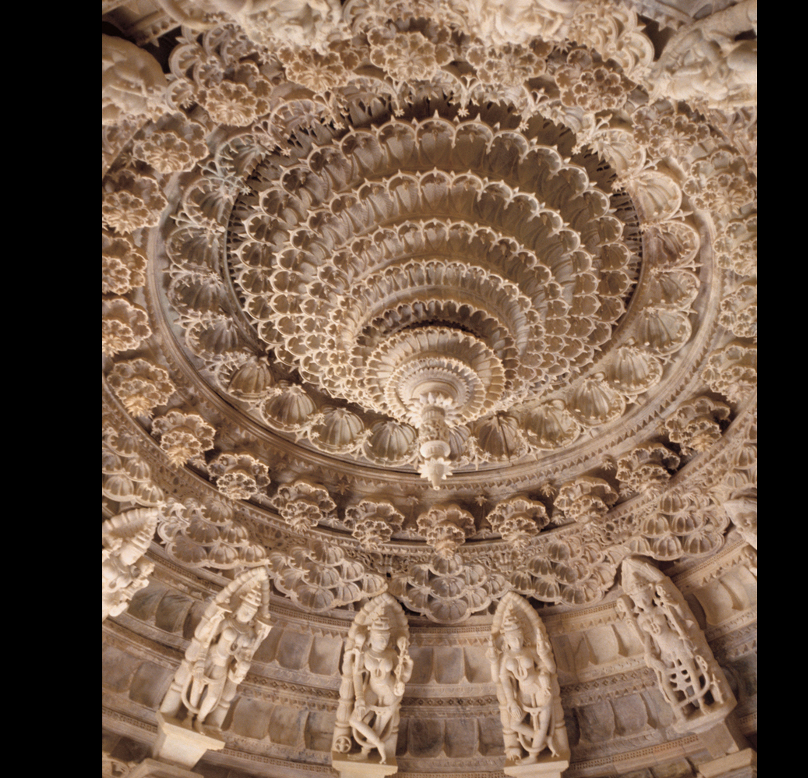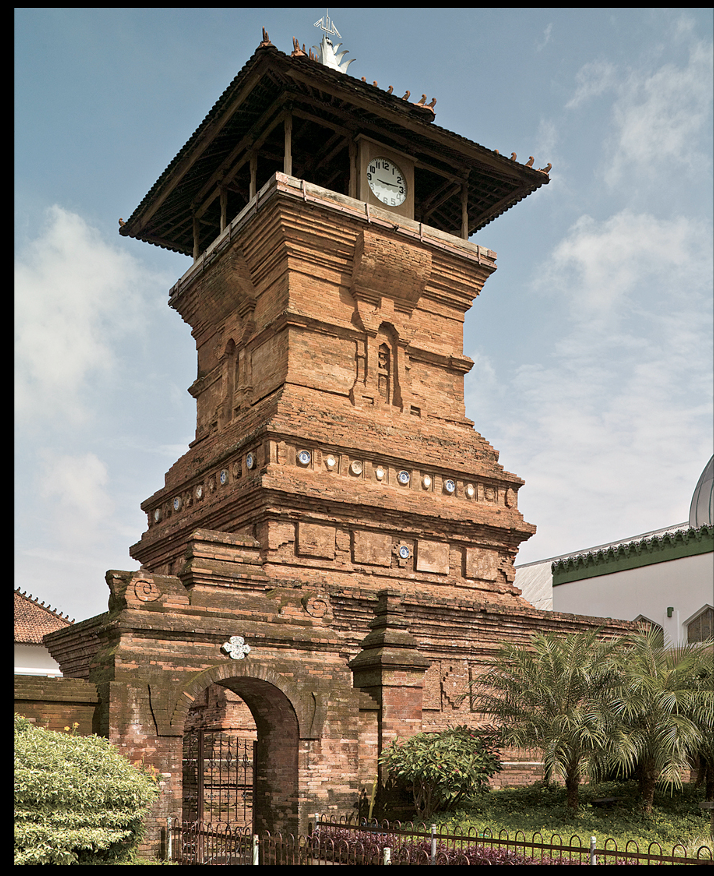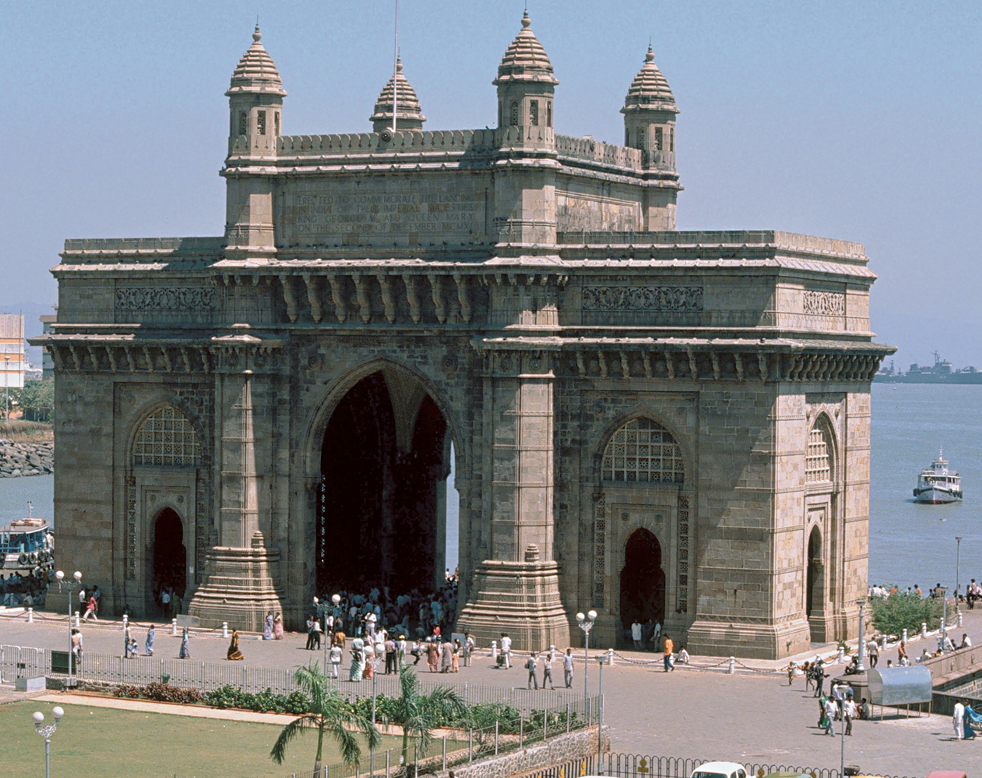Chapter 24: Art of South and Southest Asia after 1200
1/7
There's no tags or description
Looks like no tags are added yet.
Name | Mastery | Learn | Test | Matching | Spaced |
|---|
No study sessions yet.
8 Terms
TAJ MAHAL, DETAIL
Agra, India.
Mughal period, reign of Shah Jahan, c. 1631-1648.

-White marble structure
-reflection shimmers in pools of garden to to a vision of paradise written in Qur’an
-Facade with inscription from Amanat Khan calligrapher,
-Facade with floral arabesque in stones: carnelian, agate, coral, turquoise, garnet, lapis , jasper,
-Originally called the illuminated tomb, only since 9th cent known as TAJ MAHAL
-Built by the Mughal ruler Shah as a mausoleum for his favourite wife, Mumtaz Mahal who died at child birth and a tomb for himself,
-Inside evokes “the 8 paradise” with 8 small chambers that ring the interior, one at each corner ad one at each Iwan (vaulted opening with an arched portal, typical feature of eastern Islamic architecture)
-two stories, 8 chambers, rooms ring octogonal central area, which rises the full 2 stories to a domed ceiling that is lower than the outer dome
-central chamber has inlaid cenotaphs(funery monuments to someone whose remains lay elsewhere) of wife who remains lay in tomb in crypts below
-Complex has more than one marble tomb, one side mosque the other side has a rest house
-large garden infront and back of the Jamuna river is consistent with islamic notions of paradise
-building has perfect symmetry with gardens and side buildings
-Mughals were most successful of islamic groups that establish in India in 12th cent, under them persian and central asian influences continued, Mughals also added older traditions of South Asian adding more dimension
Indian islamic structures, by Shah Jahan for wife Mumtaz Mahal who had a oversee of the design and construction.
1st major architectural undertaking of Shah Jahan’s reign, Taj Mahal envokes personal loss and imperial authority.
Visitor enter through monumental hall like gate and tomb rises before them across a garden with pools. Quadrant plants and trees, flowers framed walkways and stone inlaid geometric patterns. Fruit trees and cypress synifie life and death.
Garden used to reach the banks of Jamuna River, which mean the structure was at te center fo 4 part garden which was a Mughal traditional tomb setting.
Tombed flank with smaller structure, mosque made of red sandstone starting the glory of white marble which was a material used for saint meaning showing the religious importance of Shah Jahan and Mumtaz Mahal.
Tomb raised high showing importance, minarets also flank tomb.
Crowning each minarets are chattri(pavilion) a Islamic Indian prominant architecture piece.
Octoqonal shape prevades the tomb with chamfered (sliced off) corners.
Tomb almost as tall as wide, identical facades, central iwan flanked with small iwans which contribute to structure weightlessness.
roof has 4 octagonal chattris, dome rises gracefully
Platform of Taj is Carved in relief with a blind Arcade(decorative arches set into a wall) motif and carved relief panels of flowers
Portals framed with verse of Qur’an and inlaid black marble
pietra dura technique on the spandrels
LUNA VASAHI, MANDAPA CEILING
Mount Abu, India. 1230.

lace like interior
cut relief carvings in marble with details made from abrasion and rubbing rather than chisel
ornate dome that crowns the mandapa hall
corbeled dome made of concentric bands of sculpted stone capped with carved pendant hanging from apex
QUTB MINAR
Quwwat ul-Islam Mosque, Mehrauli Archaeological Park, Delhi. 1211-1236. [Fig. 24-05]

Saltonates came into India prior to the. Came for a shirt time, establish Islam, citadel, 237 ft tall, at the time it was the tallest structure of south Asia, Minaret is a symbol of Islamic faith and architecture. Expression of power and symbolic. Expressing power, domincae and religious authority rather than a functioning religious structure

What is a gopura
A entrance gateway(
ex: virupaksha temple
what is atelier?
workshop
ex: Akbar created for painters
Nadir al-Zaman (Abu'l Hasan) JAHANGIR AND SHAH ABBAS
From the St. Petersburg Album. Mughal period, c. 1618. Opaque watercolor, gold and ink on paper

Jahangir ruled 1605-1627 and was Akbar’s son and successor
has his own workshop which was establish before he became emperor
focus was great than his father’s , in his memoir he claimed ” his liking for painting and his practice judging it has arrived before him that any work before him he can see who work it is without being told the name and if different painter did different faces he can tell who’s is who’s and is someone added eyes and eyebrows to a face he can perceive who’s work is the original face is and who painted the eyes and brows.
Portrait became a major art under Jahangir
small size therefore not for his subjects because it could not be displayed
could have been seen by Shah Abba’s representatives at court
first glance depicts a close friendship
lion and lam laying peacfullyis a symbol of harmony
framed by sun and moon while standing on a map of the world might imply bonds of trust and peace extend to their repective states, yet that is far from the truth
Pianting was created during high tension between SHAH ABBAS and the Mughal throne
troubles centered on Kandaha in Afghanistan
prosperous city given to Shah Abba’s ancestor by mughal emperor Humayun but later in time of Akbar Mughal took back control. Shah Abba waited to reclaim it believing it was his right.
When Mughals were distracted during civil conflict in South Asia Shah recaptured Kandahar
A new look sees Jahangir larger than Shah whos seems to be bowing to the mughal emperor
Jahangir head is centered in halo and stand on lion who is taking up a vast majority of the earth including Shah own holdings in Iran and Afghan.
New meaning is evident of a reminder of Mughal’s superiority and a warning against further expansion.
MINARET, KUDUS MOSQUE
1549. Kudus, Java, Indonesia.

Muslim merchants played a mojor role in overseas and spent months waiting at ports for wind to change. over time Islam faith was accepted by local population in malaysia and indonesia , from there it spread across islands in southeast Asia. Indonisia today is one of the most populous muslim countries.
Islamic monuments in Indonesia draw from a rich and divers repertoire of styles and motifs
one of the earliest exampls islamic architecture In Java is the Kudus mosque dedicated to one of Java’s 9 great saints
Mosque itself has been renovated but the most tower like Minaret still survives.
Brick work and decorative niches are reminiscent of earlier Hindu shrine towers, this structure calls for worship by muslims 5 times a day
In tradionaly Javanese fashion, this was a done with large drum along with sung prayers
lowest bands of the tower are decorated with inset porcelain plates imported from China, which add colour to the exterior,
Various indigenous and international influence in tower speaks to cosmopolitan nature of 16 cent Java.
George Wittet GATEWAY OF INDIA
Mumbai, India. 1924.

over the course of 19th cent under the control of the British goverment, i=India was brought forcefull into contact with the West and its culture. Political concern extended over the Arts. Took european aspects as british architects built in the revivalist styles favoured in England.
over time, British reduced their insistence on promoting difference through their choice of architectural forms and began to appreciate indigenous style.
Built to welcome King George V on his visit to India
British Constructed the monument in the form of a european trumphial arch while embellishing it with south Asian architectural features
stone screens, ornat brackets, pointed arches, floral decorations taken from Eralier Hindu and Muslim architectural practices in the subcontinent
Hybrid style known as IndoSaracenic style became prefered architectural style for British governmental buildings and elites privates estates in India by late 19th cent: few ecampls built in ENGLAND AND OTHER PARTS OF THE EMPIRE
India won independence in 1947 and last of British troops in South Asia departed through this gate a year later 1948.